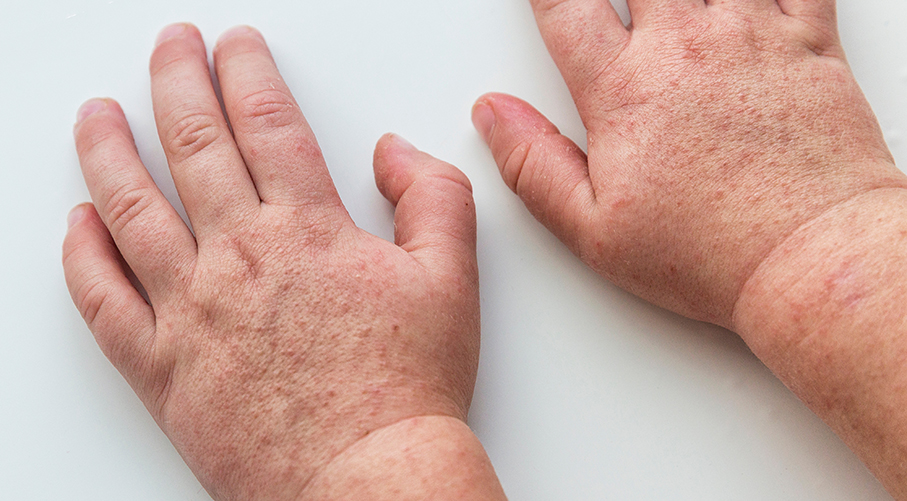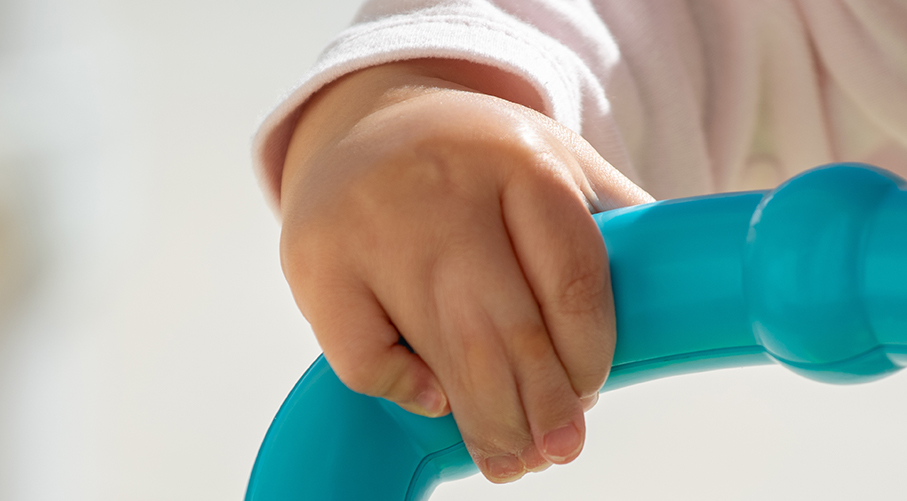Introduction
Pediatric hand conditions can interfere with child development. They can impede motor skills and prevent children from learning self-care. These conditions can also cause emotional distress and impact social interactions. Parents and medical professionals can ensure proper development by addressing issues early on.

There are various pediatric hand conditions, but common ones include congenital trigger thumb, which causes abnormal flexing in the thumb, thumb duplication in which the child has two thumbs on one hand, and syndactyly which is characterized by webbing between the fingers. Fortunately, each of these conditions can be treated to ensure children can go on to enjoy optimal well-being.
Section 1: Congenital Trigger Thumb
Congenital trigger thumb is characterized by limited movement of the thumb due to a swollen tendon. The following sections will discuss its symptoms, diagnosis, and treatment.

1. Definition and Overview
- What is Congenital Trigger Thumb? Congenital trigger thumb affects how a thumb bends and straightens. It may click or pop and produce pain during movement.
- How Does Congenital Trigger Thumb Occur? The human hand features a tunnel at the palm side of the thumb which the flexor tendon (flexor pollicis longus (FLP) tendon) passes through. In some instances, the tendon thickens and cannot pass through the tunnel, or, if it does pass through, it produces a painful click or pop. Children with congenital trigger thumbs present with a slightly bent thumb.
- Prevalence and Age of Diagnosis: The condition occurs in three out of every 1000 children. It is typically diagnosed in children 1-3 years old.
2. Symptoms and Clinical Presentation
Children with trigger thumb may experience the following symptoms:
- Stiffness and inability to extend the thumb: Children with congenital trigger thumb are unable to fully extend their thumb and may have limited use of the thumb.
- Notta’s nodule: This is a bump that forms on the flexor tendon at the base of the thumb preventing normal movement.
- Possible Pain: The condition is normally painless, but children may experience pain if the tendon passes through the tunnel.
3. Causes and Risk Factors
Congenital trigger thumb’s cause is unknown but medical experts believe it may occur when the tendon grows faster than its protective sheath. It is not truly congenital in that it does not appear until a child is closer to toddler age. However, pediatricians believe children are prone to the condition at birth.
4. Diagnosis and Evaluation
Diagnosis of congenital trigger thumb typically does not require x-rays or images. Rather, the physician will inquire about a child’s medical history and conduct a physical exam to determine the condition and its severity.
5. Treatment Options
Congenital trigger thumb may resolve itself in time. However, treatments may be necessary. Common approaches include:
- Non-Surgical: A physical therapist may recommend stretching exercises to increase range of motion. A splint may be worn to extend the thumb. Steroid injections may help adults with the condition, but they are not recommended for children.
- Surgical: If non-surgical methods fail, surgical treatments may be recommended. The minimally invasive procedure involves making a small cut in the tendon sheath allowing the tendon to move freely.
- Postoperative care and prognosis: After surgery, children will typically wear a cast for about two weeks while the sutures dissolve. They may experience some pain and swelling in the first few days. Most children make a complete recovery.
Section 2: Thumb Duplication (Preaxial Polydactyly)
Thumb duplication is a congenital condition wherein a child is born with two thumbs on one hand. The condition is treatable with the right approach.

1. Definition and Overview
- What is Thumb Duplication? Thumb duplication is diagnosed in children born with two thumbs on one hand. The thumbs may be separate or fused. The second thumb may be fully developed, or it may be a small additional nub.
- How Does Thumb Duplication Occur? Thumb duplication occurs as a child develops in the womb. The muscles, ligaments, blood vessels, and nerves split during development causing two thumbs to appear which are smaller and less developed than normal.
- Prevalence and Hereditary Patterns: the condition is diagnosed in about one in every thousand children. It is more likely to occur in Asian, Caucasian, and Native American children. It can be hereditary, especially if the thumb has three bones instead of two.
2. Symptoms and Clinical Presentation
Thumb duplication is not painful, but it can interfere with thumb movement. Children may experience malformation in the CMC joint at the intersection of the thumb and wrist bone which can complicate movement. They may also lose flexibility at the IP joint at the top of the thumb diminishing the ability to pinch small objects.
3. Causes and Risk Factors
Pre-axial polydactyly is often genetic, especially when the thumb has three bones instead of two. It can also be related to genetic conditions like Down Syndrome. Other contributing factors include the shape of the bone, joint development, and abnormal tendon insertions.
4. Classification of Thumb Duplication
Wassel classification is a system often used to describe the extent of skeletal duplication. It can be classified as bifid (a deep cleft), duplicated, or unaffected. A Roman numeral is used to indicate how far the duplication extends.
The system helps guide treatment recommendations for surgical techniques. It sets a universal framework for thumb duplication management. Wassel classification also facilitates clear communication and is easy to duplicate.
5. Diagnosis and Evaluation
Thumb duplication may be detected during a prenatal ultrasound. If it is not noticed in the images, it will be apparent at birth. Doctors will use X-rays to determine the extent of the duplication and the best surgical treatments.
6. Treatment Options
Pre-axial Polydactyly can only be treated with surgery which usually takes place when the child is 1 -2 years old. Surgery is complex. Removing the extra thumb will not typically solve the problem as each thumb contains elements that contribute to a fully functioning digit.
One of three approaches is used as follows:
- Simple Excision: This involves the removal of the extra thumb. Though is it the simplest treatment option, it is often not recommended for full recovery.
- Complex Incision: This surgery involves removing the more hypoplastic thumb and performing soft tissue reconstruction to deviant tendons.
- Complete Reconstruction: This procedure involves combining symmetrical parts of the thumb into a single thumb.
Although the surgery is complex, it improves the appearance of the thumb and ensures functionality and dexterity. After surgery, the child will wear a cast for four weeks. After the cast comes off, a physical therapist may recommend exercises the parent can do with the child at home to promote optimal movement.
The surgery is usually successful. However, a small percentage of children may need additional procedures later in life.
Section 3: Syndactyly
Syndactyly is a condition where two or more fingers or toes are fused creating a webbed appearance. It can severely limit functionality, but it is treatable.

1. Definition and Overview
- What is Syndactyly? Syndactyly is a condition in which a child’s toes or fingers are fused. However, it more commonly occurs in the fingers. It often affects both hands and typically occurs between the middle and ring finger.
- How Does Syndactyly Occur: During gestation, babies’ hands form into a paddle shape which split off into separate fingers during weeks 6-8 of pregnancy. In children with syndactyly, the separation does not occur, and the fingers remain fused.
- Typical age of diagnosis and prevalence: Syndactyly occurs in about one in 2500 children. It is more likely to occur in Caucasian babies as compared to Black or Asian babies. The condition is diagnosed at birth.
2. Symptoms and Clinical Presentation
The symptoms of syndactyly can vary depending on the extent of the fusion which can range from mild to severe. However, regardless of the severity of the condition, children will experience a reduction in hand function, grip, and dexterity. The digits will have a webbed appearance and will not move well.
3. Types and Classifications of Syndactyly
Syndactyly can be classified based on the extent of the fusion as follows:
- Simple Syndactyly: The fingers are joined by skin and soft tissue only.
- Complex Syndactyly: The underlying bones are joined together.
- Complicated Syndactyly: There are extra bones, and the tendons and ligaments are abnormally developed.
The condition’s classification will guide the treatment.
4. Causes and Risk Factors
Syndactyly is typically a genetic condition. 10% to 40% of children born with the condition inherited from a parent. It is sometimes a symptom of the genetic condition Poland syndrome or Apert Syndrome, rare conditions that can affect development in certain parts of the body.
However, the condition can also be sporadic, non-hereditary, and non-syndromic.
5. Diagnosis and Evaluation
Syndactyly can be diagnosed prenatally during an ultrasound. If it is not detected during gestation, it will be apparent at birth.
The doctor will use X-rays and MRIs to determine the extent of the fusion and the best treatment options. They may also evaluate other parts of the child’s body to determine if the condition is related to a syndrome.
6. Treatment Options
Syndactyly is surgically treated. The surgeon will split the skin evenly between the two fingers. In some instances, skin grafting may be needed to cover the fingers. The skin graft is usually sourced from the elbow to minimize scarring.
Babies with more complex cases of syndactyly may need multiple surgeries. Additionally, complications could arise if the fused fingers share joints, nerves, and tendons.
The child will wear a cast after the surgery is complete. A therapist will recommend exercises to ensure the hand regains functionality after the cast is removed. Healing times vary depending on the extent of the surgery.
Surgeons typically do not recommend surgery until the baby is one or two to minimize anesthesia risks. It also gives them a bigger surface area to work with.
Conclusion

Pediatric hand conditions can be frightening for parents. Trigger thumb impedes thumb movement. Preaxial polydactyly is characterized by duplicate thumbs. Babies with syndactyly are born with fused digits. All conditions can impede development if not addressed, but with early intervention, recovery is possible.
Families can support recovery by ensuring concerns are discussed with doctors early on. They must actively assist with aftercare to help babies achieve full functionality in their digits. With proper support, children can move forward to lead happy, healthy lives.